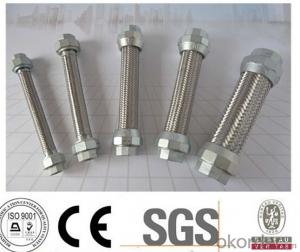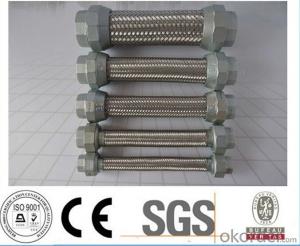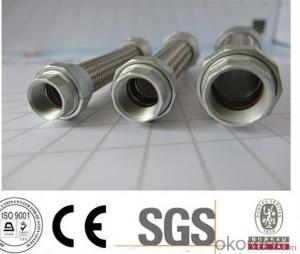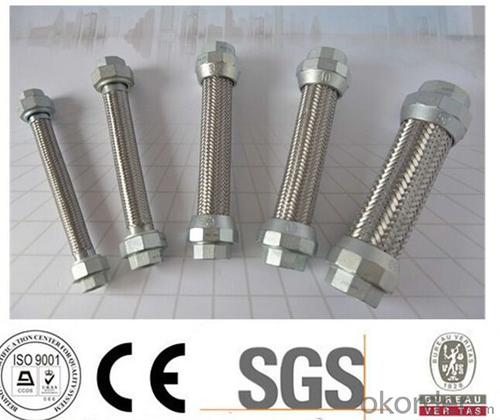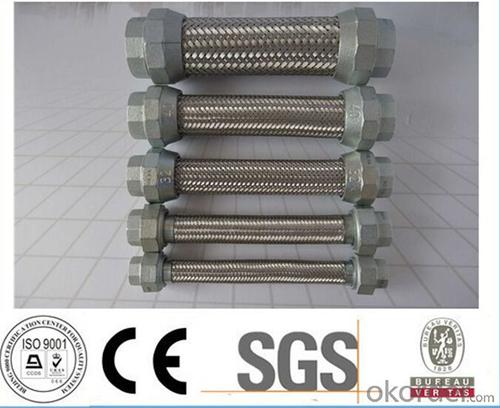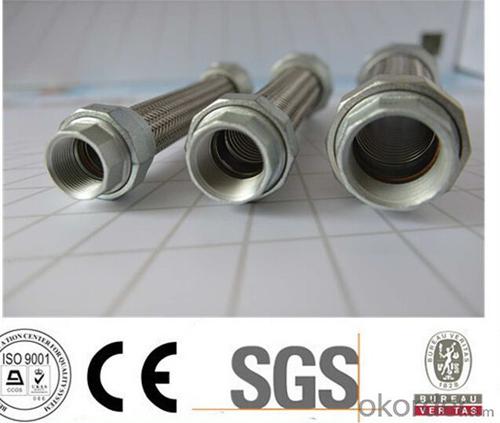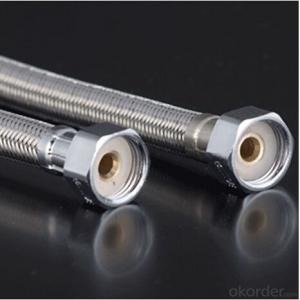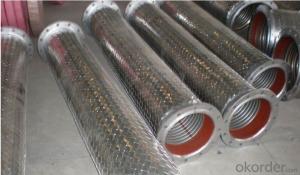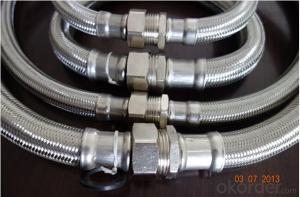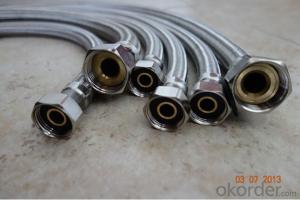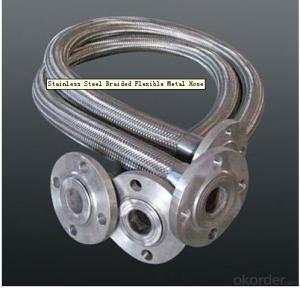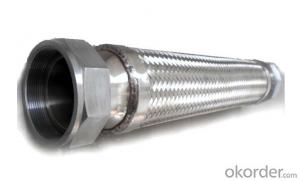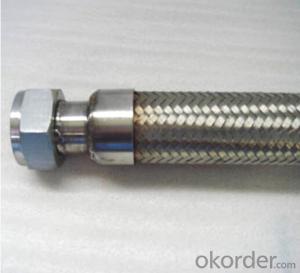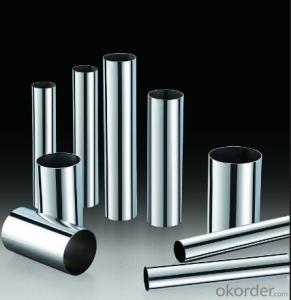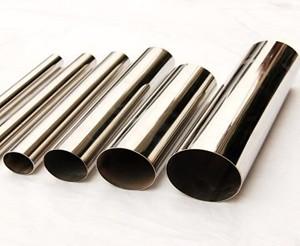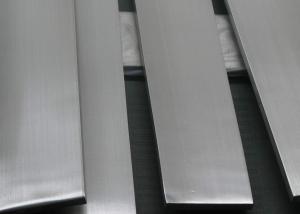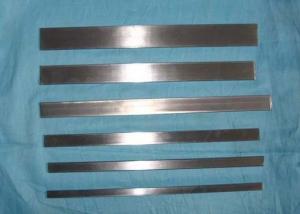Stainless Steel Braid Hose with Inside Fittings
- Loading Port:
- Tianjin
- Payment Terms:
- TT OR LC
- Min Order Qty:
- 1000 pc
- Supply Capability:
- 100000 pc/month
OKorder Service Pledge
OKorder Financial Service
You Might Also Like
Specification
Stainless Steel Braid Hose with Inside Fittings
Applications of Stainless Steel Braid Hose with Inside Fittings:
--Refueling system
--Chemical and pharmaceutical industry
--Industrial hydraulic systems
--Air conditioners in industrial and construction –site vehicles
--Food and beverage industry
--Special and standard industrial applications
--Water and cleaning management
Features of Stainless Steel Braid Hose with Inside Fittings:
1. )O. D.: 13-18MM 0.2-3M long
2. )Nut.: Nickel/Chrome Plated Brass (Zinc / Iron / Aluminum is available)
3. )Size Of Nut.: Female&Male 1/2''; 3/4''; 3/8''; 7/8''; 5/16'', and M10...
4. )Insert.: Brass (Zinc / Aluminum / Plastic is available)
5. )Inner tube.: Rubber/ EPDM/PVC
6. )Covered Material: Stainless Steel 201, 301, 304 /Aluminium Wire
7. )Working Pressure: 5Kg-15Kg
8. )Temperature: 0-92° C
9. )Quality Assurance: 3 years
RemarkAPPLICATION: HOUSEEHOLD WARE, BATHROOM WARE, SHOWER HOSE
PAYMENT: T/T, L/C
DELIVERY TIME: 20DAYS OR 30DAYS AFTER RECEIVED 30% DEPOSITS
MOQ: 5000PCS
ODM&OEM IS ACCEPTABLE
PackageInner: PP bag /Blister packing Outer: Carton box
Specifications of Stainless Steel Braid Hose with Inside Fittings:
NO | I.D | Refer to O.D | Working pressure | Burst pressure | approximate Weight | |||||
(inch) | (mm) | (inch) | (mm) | MPa | Psi | MPa | Psi | kg/m | lbs/ft | |
1 | 1/8 | 3.2±0.2 | 0.35 | 9±0.3 | 2.06 | 300 | 8.27 | 1200 | 0.078 | 0.12 |
2 | 5/32 | 4±0.2 | 0.4 | 10±0.3 | 2.06 | 300 | 8.27 | 1200 | 0.092 | 0.14 |
3 | 3/16 | 4.8±0.2 | 0.43 | 11±0.3 | 2.06 | 300 | 8.27 | 1200 | 0.108 | 0.16 |
4 | 1/4 | 6.3±0.3 | 0.5 | 12.7±0.3 | 2.06 | 300 | 8.27 | 1200 | 0.134 | 0.2 |
5 | 5/16 | 8.0±0.3 | 0.56 | 14±0.3 | 2.06 | 300 | 8.27 | 1200 | 0.147 | 0.22 |
6 | 3/8 | 9.5±0.3 | 0.63 | 16±0.4 | 2.06 | 300 | 8.27 | 1200 | 0.182 | 0.27 |
7 | 15/32 | 12±0.3 | 0.75 | 19±0.5 | 2.06 | 300 | 8.27 | 1200 | 0.238 | 0.35 |
8 | 1/2 | 12.7±0.4 | 0.78 | 20±0.5 | 2.06 | 300 | 8.27 | 1200 | 0.262 | 0.39 |
9 | 5/8 | 16±0.4 | 0.94 | 24±0.5 | 1.03 | 150 | 4.12 | 600 | 0.351 | 0.52 |
10 | 3/4 | 19±0.4 | 1.13 | 28.8±0.5 | 1.03 | 150 | 4.12 | 600 | 0.515 | 0.77 |
11 | 1 | 25.4±0.5 | 1.38 | 35±0.6 | 1.03 | 150 | 4.12 | 600 | 0.637 | 0.95 |
Images of Stainless Steel Braid Hose with Inside Fittings:
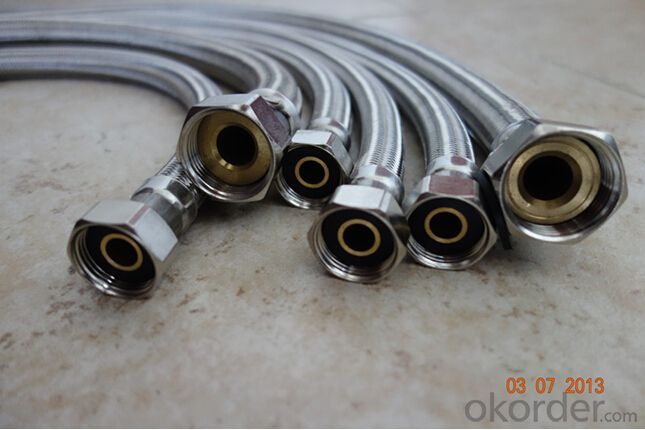
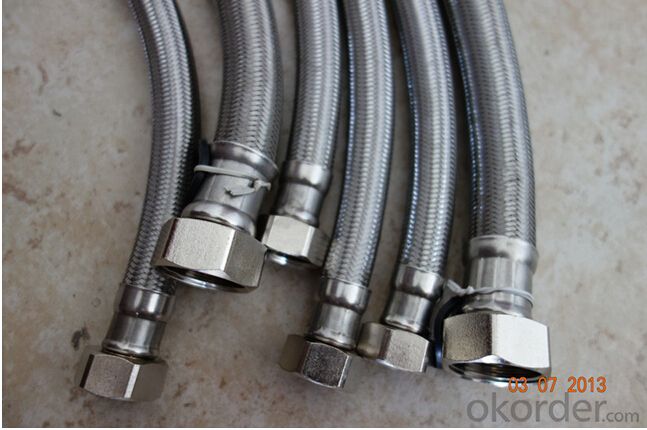
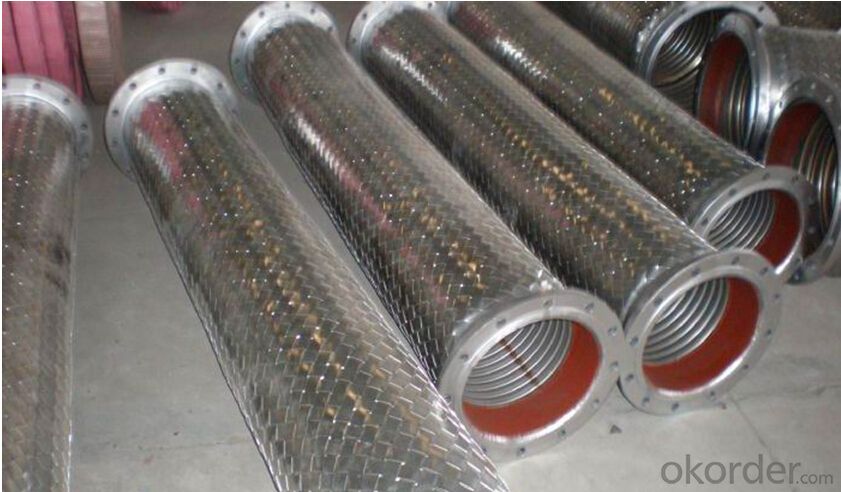
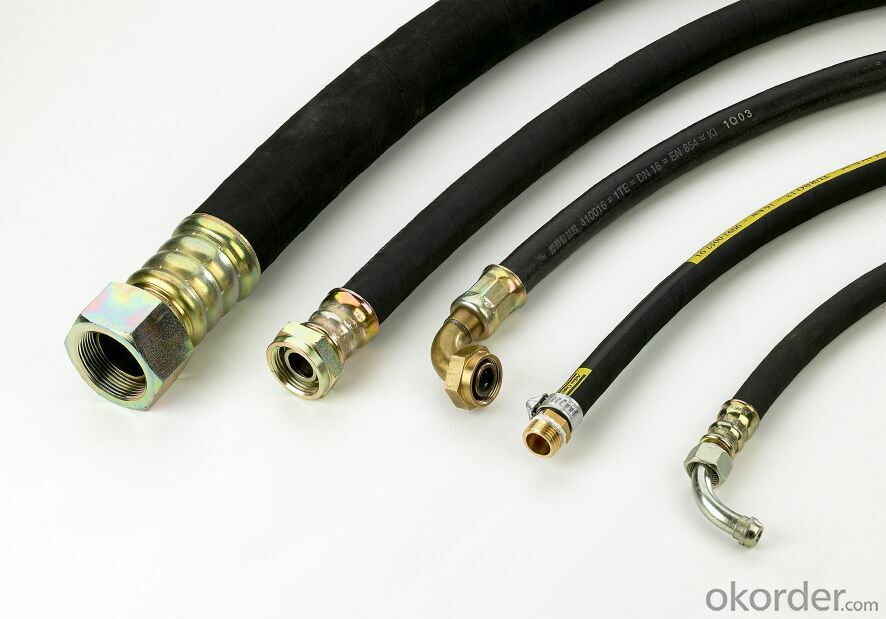
Package of Stainless Steel Braid Hose with Inside Fittings:
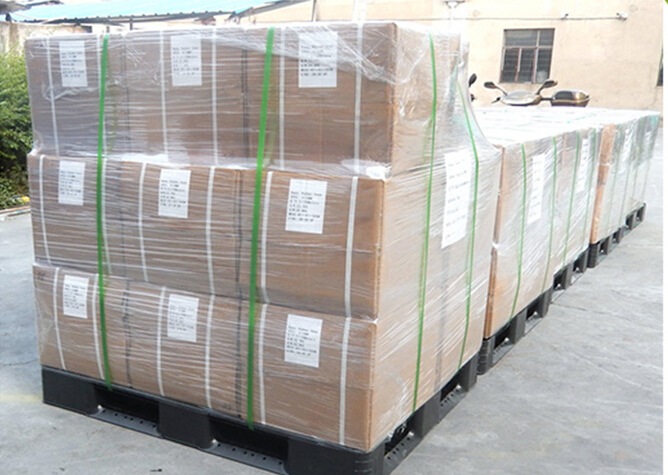
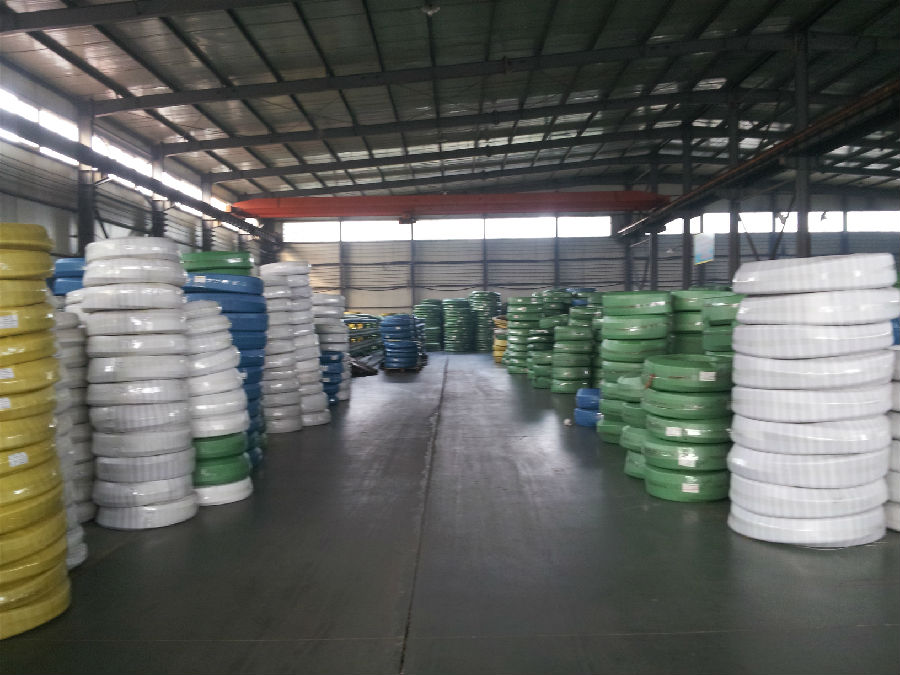
FAQ of Stainless Steel Braid Hose with Inside Fittings:
Who we are:
Answer: We CNBM is a Chinese state-owned enterprise ranked 267th among the Global Fortune 500, as the largest building materials company,we have over 300 affiliated companies,and so many production lines and branch office distribute in China.
2. About our quality:
Answer: Every product needs to be quality proved before shipping.
3. About our service:
Answer: We could gurantte that we can reply you in 2 working hours.
- Q: What is the maximum pressure stainless steel pipes can handle?
- The maximum pressure capacity of stainless steel pipes varies depending on several factors, including the grade of stainless steel, the pipe's wall thickness, and the specific application. Stainless steel pipes exhibit high resistance to pressure, making them suitable for diverse industrial uses. Different grades of stainless steel pipes, such as 304, 316, and 321, come with their own maximum pressure ratings. For example, grade 304 stainless steel pipes typically withstand pressures of up to 870 psi, while grade 316 stainless steel pipes can handle pressures up to 1,500 psi. It is important to consider the wall thickness of the pipe, as it significantly affects the maximum pressure capacity. Thicker-walled pipes generally tolerate higher pressures compared to thinner-walled pipes. Moreover, the specific application and operating conditions influence the maximum pressure capacity of stainless steel pipes. Factors like temperature, corrosive substances, and external forces must be taken into account to ensure the pipes can endure the intended pressure. To determine the maximum pressure capacity for a specific application, it is advisable to consult with a qualified engineer or refer to industry standards and guidelines, such as those provided by the American Society of Mechanical Engineers (ASME) or the International Organization for Standardization (ISO). These resources offer comprehensive information on pressure ratings and specifications for different grades and sizes of stainless steel pipes.
- Q: Can stainless steel pipes be used for firefighting systems?
- Firefighting systems can utilize stainless steel pipes due to their durability and resistance to corrosion. The material's ability to withstand heat, pressure, and chemicals makes it suitable for transporting water, foam, and other fire suppression agents. In addition to its high strength and ability to endure extreme conditions, stainless steel pipes are also recognized for their smooth inner surface, which reduces friction loss and maximizes water flow. This quality is crucial for the effectiveness of firefighting operations. Overall, stainless steel pipes offer a dependable and long-lasting solution for firefighting systems, ensuring safety and efficiency in critical situations.
- Q: How are stainless steel pipes different from galvanized pipes?
- Stainless steel pipes and galvanized pipes are two types of piping materials that differ in composition and properties. The main distinction between them lies in their corrosion resistance capabilities. Stainless steel pipes exhibit high resistance to corrosion due to the presence of chromium, which forms a protective layer on the pipe's surface. This makes them ideal for applications in corrosive environments, such as the chemical industry or marine applications. In contrast, galvanized pipes are steel pipes coated with a layer of zinc to prevent rusting. While this zinc coating provides some degree of protection against corrosion, it is not as durable or long-lasting as the protective layer formed on stainless steel pipes. Galvanized pipes are commonly used in plumbing, water distribution systems, and outdoor applications where corrosion resistance is necessary but not critical. Another difference between the two types of pipes is their appearance. Stainless steel pipes have a sleek and shiny appearance, often preferred for aesthetic reasons or in applications where appearance matters. On the other hand, galvanized pipes have a dull gray color due to the zinc coating. In terms of cost, galvanized pipes are generally more affordable than stainless steel pipes. However, the initial cost of stainless steel pipes can be justified by their longevity and superior corrosion resistance, which ultimately result in lower maintenance and replacement costs over time. When choosing between stainless steel pipes and galvanized pipes, it is important to consider the specific requirements of your project or application. Factors such as the environment, expected lifespan, and budgetary constraints should be taken into account to ensure the right choice is made.
- Q: What's the difference between stainless steel 304 and stainless steel 202?
- 202 stainless steel is one of the 200 series stainless steel, the national standard model is 1Cr18Mn8Ni5N. 200 series stainless steel is low nickel, high manganese stainless steel, nickel content, manganese content of about 8%, is a nickel type stainless steel.
- Q: What is the difference between 904L and 316L stainless steel pipes?
- The main difference between 904L and 316L stainless steel pipes lies in their composition and properties. 904L stainless steel is a high alloy austenitic stainless steel with higher levels of chromium, nickel, and molybdenum, making it highly resistant to corrosion in various environments, including harsh industrial and marine conditions. On the other hand, 316L stainless steel is a lower alloy austenitic stainless steel that contains less chromium, nickel, and molybdenum, making it less resistant to corrosion compared to 904L. Therefore, 904L stainless steel pipes are typically preferred in applications that require exceptional corrosion resistance, while 316L stainless steel pipes are suitable for general-purpose applications.
- Q: How do you protect stainless steel pipes from external damage?
- There are several ways to protect stainless steel pipes from external damage. One common method is to apply a coating or paint specifically designed for stainless steel, which acts as a protective barrier against corrosion, scratches, and other forms of external damage. Another approach is to use pipe supports and clamps to ensure proper alignment and prevent excessive stress or strain on the pipes. Additionally, implementing measures such as regular inspections, maintenance, and protective covers can help safeguard stainless steel pipes from external factors that could potentially cause damage.
- Q: What is the hardness of stainless steel pipes?
- The hardness of stainless steel pipes can vary depending on the specific grade and composition of the steel. However, stainless steel pipes are generally known for their high hardness and durability, which makes them suitable for various industrial applications requiring resistance to corrosion, heat, and wear.
- Q: What is the difference between 347 and 316 stainless steel pipes?
- The composition and intended use are what sets 347 and 316 stainless steel pipes apart. 347 stainless steel pipes have a higher percentage of niobium, which enhances their stability at high temperatures and resistance to sensitization. This makes them ideal for applications where the pipes will be exposed to elevated temperatures, such as in heat exchangers, furnace parts, and chemical processing equipment. The addition of niobium also improves their resistance to intergranular corrosion. On the other hand, 316 stainless steel pipes consist of molybdenum, which provides increased resistance to corrosion and pitting. This makes them suitable for applications involving exposure to harsh chemicals, saltwater, and other corrosive environments. They are commonly used in industries such as marine, pharmaceutical, and food processing. Both grades have excellent strength and corrosion resistance in terms of mechanical properties. However, 347 stainless steel is generally more expensive than 316 stainless steel due to its higher nickel content. Ultimately, the choice between 347 and 316 stainless steel pipes depends on the specific requirements of the application. If high-temperature stability and resistance to sensitization are crucial, 347 stainless steel pipes would be the preferred option. If the primary concern is corrosion resistance, particularly in harsh environments, 316 stainless steel pipes would be more suitable.
- Q: What is the difference between 304J6 and 316J6 stainless steel pipes?
- The composition and properties of 304J6 and 316J6 stainless steel pipes are the main factors that differentiate them. 304J6 stainless steel is a variation of the widely used 304 stainless steel with low carbon content. It consists of approximately 18% chromium and 8% nickel, providing excellent corrosion resistance and durability. This grade finds application in various fields such as food processing, chemical processing, and architecture. On the other hand, 316J6 stainless steel is an austenitic grade known for its superior corrosion resistance compared to 304J6. It contains about 16-18% chromium, 10-14% nickel, and 2-3% molybdenum. The inclusion of molybdenum enhances its ability to withstand pitting and crevice corrosion in chloride environments, making it suitable for marine and coastal applications. Regarding mechanical properties, both grades exhibit satisfactory strength and toughness. However, due to its alloy composition, 316J6 stainless steel typically possesses higher tensile strength and hardness. In terms of price, 316J6 stainless steel pipes generally carry a higher price tag than 304J6 due to the increased cost of molybdenum. Consequently, the choice between the two grades depends on the specific requirements of the intended application and the desired level of corrosion resistance.
- Q: What is the difference between seamless and cold-drawn stainless steel pipes?
- Seamless and cold-drawn stainless steel pipes differ in terms of their manufacturing methods and characteristics. Seamless stainless steel pipes are produced without any welding or seams. The process involves piercing a solid cylindrical billet or ingot of stainless steel and rolling it into a hollow tube shape. This seamless manufacturing technique guarantees the absence of weak points or areas prone to leakage, resulting in highly durable and reliable pipes. Additionally, the interior surface of seamless pipes is smoother, facilitating efficient fluid flow and reducing the risk of corrosion. In contrast, cold-drawn stainless steel pipes are manufactured by pulling or drawing a solid stainless steel billet through a series of dies at room temperature. This method ensures precise dimensions and a smooth surface finish. Cold-drawn pipes are commonly used in applications that require tight tolerances and a high-quality surface appearance. They are renowned for their exceptional dimensional accuracy, excellent surface finish, and increased strength. In terms of properties, seamless stainless steel pipes exhibit superior resistance to corrosion, higher strength, and increased pressure rating compared to cold-drawn pipes. The absence of welds also makes seamless pipes less susceptible to cracking or failure under high-pressure conditions. On the other hand, cold-drawn stainless steel pipes are valued for their outstanding surface finish, close dimensional tolerances, and enhanced mechanical properties. Consequently, they are suitable for applications that demand precise measurements and a smooth aesthetic. In summary, the primary distinction between seamless and cold-drawn stainless steel pipes lies in their manufacturing methods, resulting properties, and applications. Seamless pipes, manufactured without welding or seams, offer superior resistance to corrosion, increased strength, and higher pressure rating. Conversely, cold-drawn pipes, produced by pulling solid stainless steel through dies, provide excellent surface finish, dimensional accuracy, and improved mechanical properties.
Send your message to us
Stainless Steel Braid Hose with Inside Fittings
- Loading Port:
- Tianjin
- Payment Terms:
- TT OR LC
- Min Order Qty:
- 1000 pc
- Supply Capability:
- 100000 pc/month
OKorder Service Pledge
OKorder Financial Service
Similar products
Hot products
Hot Searches
Related keywords
